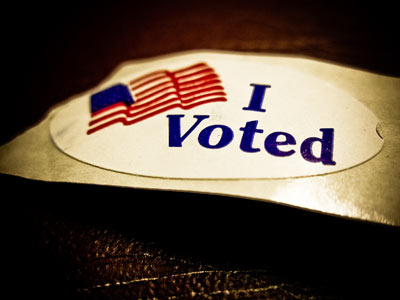
Instances of voter fraud may be rarer than lightning strikes, but in Pennsylvania more than 758,000 voters may be disenfranchised this election season because lawmakers insist on solving the “problem” of voter fraud. Pennslyvania’s new voter ID law, which will take effect for the first time this November, may prevent 758,939 otherwise eligible voters, who do not currently have an acceptable ID, from voting.
A comparison, carried out by state officials, of registered voters and PennDOT ID databases show that only 91 percent of Pennsylvania’s 8.2 million voters have an acceptable voter ID. In Philadelphia, where voters will be hardest hit by the new law, 18 percent of voters lack proper ID. State officials had previously estimated that 99 percent of voters had acceptable IDs:
“What’s truly scary about this report is that it makes my case,” Allegheny County Controller Chelsa Wagner said. “About 10 percent of otherwise eligible Pennsylvanians are disenfranchised by the Voter ID law. That’s not an acceptable number of people to tell that they can’t vote.” Disenfranchised groups, Wagner said, include older residents, students and the poor.
The American Civil Liberties Union is suing to overturn the law, and Allegheny County Democrats said in June they would file a Commonwealth Court challenge.
Voter ID laws shift the electorate to the right by disproportionately disenfranchising poor, minority and student voters. Indeed, Pennsylvania House Majority Leader Mike Turzai (R) openly admitted that this is their purpose last month when he claimed that Voter ID “is gonna allow Governor Romney to win the state of Pennsylvania.”
Nor is Voter ID a lone effort to disenfranchise voters. Republican politicians also pushed limits on early voting and registration efforts, and voter purge efforts thatdisproportionately affect voters who are more likely to vote democratic. New voter restrictions are also more likely to disenfranchise older voters.
According to the Brennan Center for Justice at New York University School of Law, more than 5 million Americans could be disenfranchised by new laws making it harder to vote. Of the 12 likely background states, five have cut back on voting rights, and, taken together, the states that have restricted voter rights make up 171, or 63 percent, of the 270 electoral votes needed to win the presidential election.
Join us in defending the truth before it’s too late
The future of independent journalism is uncertain, and the consequences of losing it are too grave to ignore. To ensure Truthout remains safe, strong, and free, we need to raise $29,000 in the next 36 hours. Every dollar raised goes directly toward the costs of producing news you can trust.
Please give what you can — because by supporting us with a tax-deductible donation, you’re not just preserving a source of news, you’re helping to safeguard what’s left of our democracy.